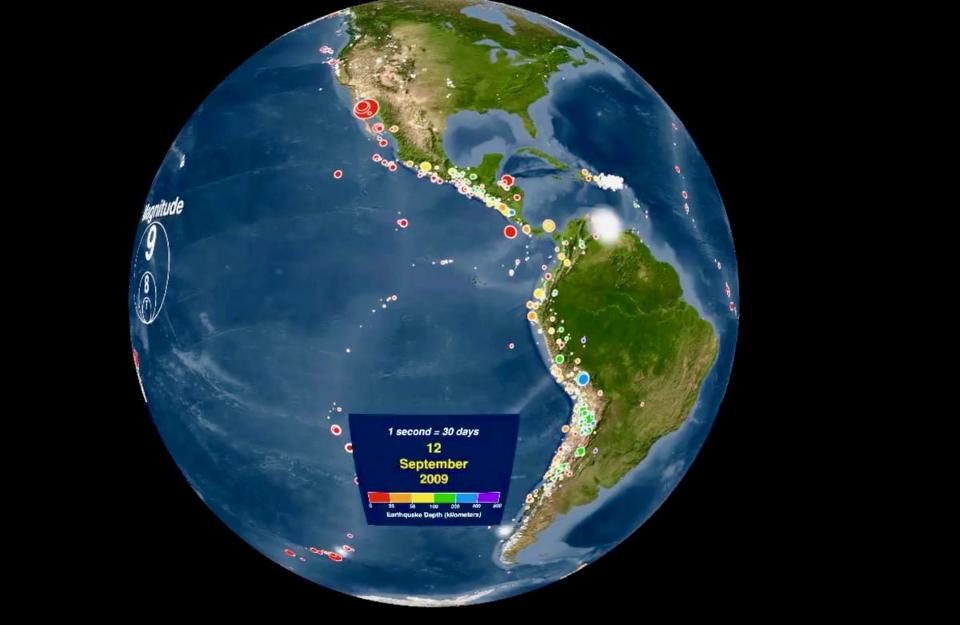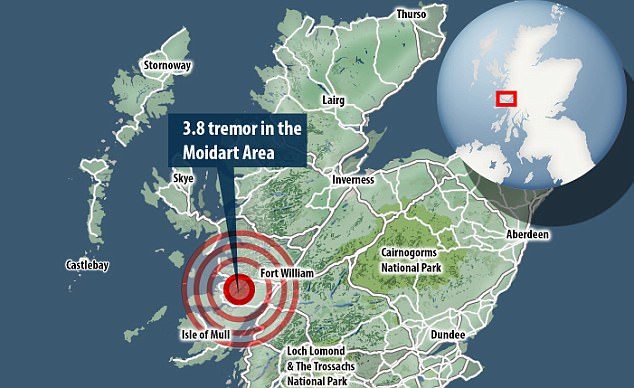
© NOAACompilation of every earthquake around the world
The National Ocean and Atmospheric Administration (NOAA)
released an animation last year that displays every recorded earthquake between January 1, 2001, and December 31, 2015. Despite the fact that this video was released several months ago, it's a remarkable way to visualize Earth's plate boundaries and the dynamic changes in Earth's crust.
Can you pick out the Pacific Ring of Fire, the Mid-Atlantic Ridge, the collision of India with Eurasia, the building of the Andes? So much information is packed into one animation it's worth discussing what earthquakes tell us about global plate tectonics and mountain building.
The video is both color coded by earthquake depth and sized dependent on the magnitude. Hotter colors represent shallower earthquakes whereas cooler colors represent deeper earthquakes up to 800 km. The circles are sized based on magnitude but then shrink as to not obscure subsequent earthquakes. At the end of the video, there is a compilation of every earthquake in that 15-year time frame, earthquakes with magnitude larger than 6.5 and those with a magnitude larger than 8.
